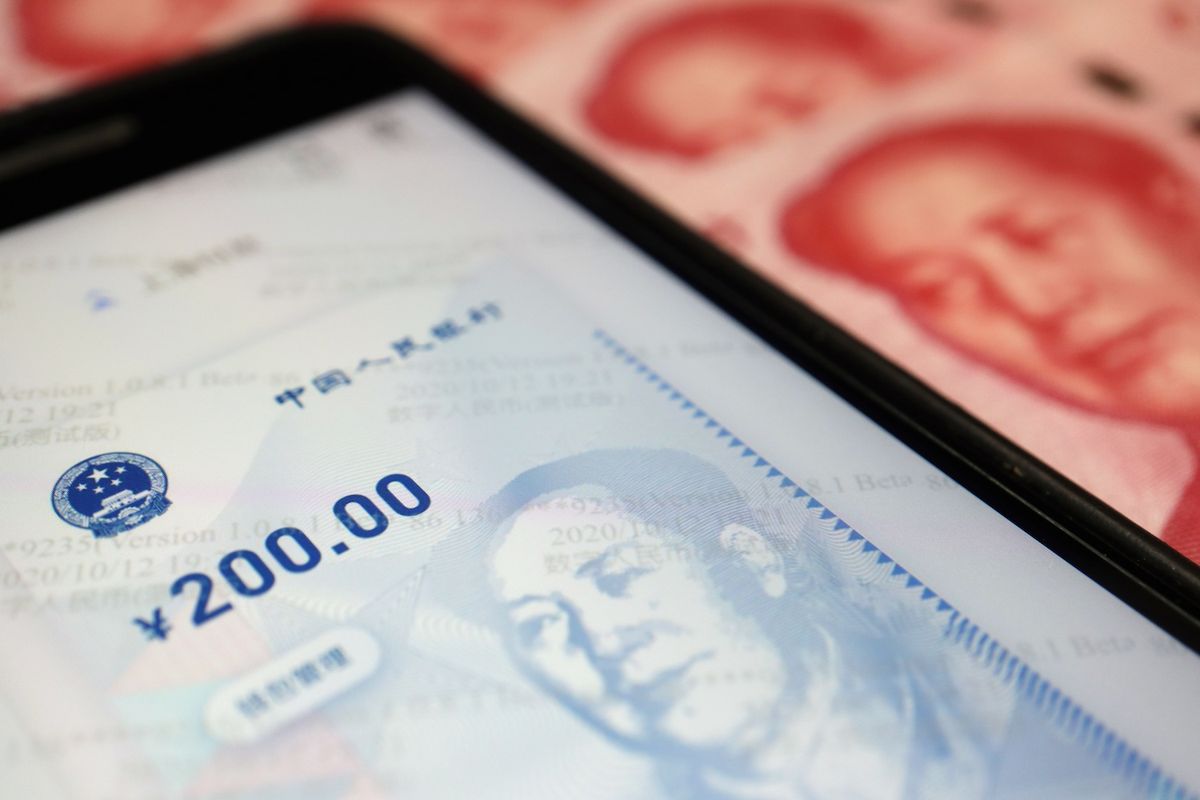China’s “digital yuan,” explained

A few minutes every morning is all you need.
Stay up to date on the world's Headlines and Human Stories. It's fun, it's factual, it's fluff-free.
For China, concerns over its own “sovereignty” have spurred on much of its efforts to develop its own digital currency.
As countries around the world continue to grapple with the economic impact of the coronavirus pandemic, China is pushing ahead with its plans for the future. Nowhere is this more clear than in its brand-new digital currency.
China’s so-called “digital yuan” has undergone escalated testing throughout 2020, with tens of thousands of shoppers in the southern Chinese technology hub of Shenzhen given access to the new currency and payment system in a recent trial.
Backed by China’s central bank, the new “digital yuan” is not just the next step in what is an increasingly cashless society, but, as some experts believe, represents the Chinese government’s attempt to establish its own “sovereign” digital currency, before it has to follow a foreign standard.
Although the “digital yuan” is not alone in a world where central banks are increasingly looking toward digital currencies, the implications of this latest advance in financial technology could be immense.
China’s digital currency
The People’s Bank of China’s “Digital Currency Electronic Payment” has been in the works for some time, but escalating tensions with the United States and the impact of the coronavirus pandemic have pushed trials forward throughout 2020.
DCEP, or the “digital yuan,” is the brainchild of former People’s Bank of China (PBOC) Governor Zhou Xiaochuan. Xiaochuan envisioned a future where China was forced into accepting a foreign-designed standard, such as Bitcoin, if it did not develop its own digital currency.
As Igor Pejic, author of the award-winning “Blockchain Babel,” explained to TMS, China is not the only country to move toward developing its own “central bank digital currency.” According to Pejic, some 10% of central banks are “already working on concrete pilots,” including in Uruguay, Sweden, the European Central Bank and others.
Sweden, in particular, has staged pilot schemes of its “E-Krona,” according to E2E Blockchains founder Richard Foster. In Sweden, “nearly everyone uses a mobile payment application called Swish,” Foster told TMS, a sign of the growing predominance of cashless payment options around the world.
For China, concerns over its own “sovereignty” have spurred on much of its efforts to develop its own digital currency.
When California-based Facebook announced the development of Libra, its own cryptocurrency pegged to a whole host of global currencies, PBOC announced its “digital yuan” would “protect our monetary sovereignty and legal currency status” threatened by these foreign developments.
The “digital yuan” will work like most other digital payment systems, with Chinese users themselves making trillions of dollars worth of digital transactions yearly. Consumers and businesses would download a “wallet” onto their phones, filing it with money from their account at a commercial bank, then using this to make direct payments toward individuals, to pay bills and more.
On the face of it, China’s “digital yuan” sounds like nothing extraordinary. The country itself is well acquainted with a variety of digital payment systems.
Ant Group, the operator of popular payments app Alipay, which sees trillions of dollars worth of transactions yearly, is expected to break records with its coming IPO, a testament to the already-digitized nature of Chinese currency and transactions.
Furthermore, in Q1 2020, mobile payment apps handled some US$7.8 trillion dollars worth of transactions, according to research by Analysys. Even before its “digital yuan,” China is already an increasingly cashless society.
Where the “digital yuan” will differ, however, is in control. Strictly speaking, the “digital yuan” will not be a cryptocurrency, as it is neither decentralized nor anonymous. It will be backed by the People’s Bank of China and reports have made clear that DCEP will be designed to be traceable, ostensibly to track and neutralize corruption and other financial crimes.
According to Reuters, the ability to track all transactions made with DCEP will give China’s authorities “a degree of control over their economy that most central banks do not have,” especially when dealing in physical cash.
Sovereignty and control
During the coronavirus pandemic and its subsequent economic fallout, China began to roll out its “digital yuan” for its first-ever real-world trials.
In April, four major cities began trialing the new digital currency, including Shenzhen, Suzhou, Chengdu and Xiong’an.
The state media outlet China Daily emphasized the importance of the steps made toward establishing a new digital currency, writing that “a sovereign digital currency provides a functional alternative to the dollar settlement system and blunts the impact of any sanctions or threats of exclusion both at a country and company level.”
Successful trials and application of the new digital currency would also add a new angle to the dispute with the US over the status of Hong Kong, where the Hong Kong dollar has been pegged to the US dollar since the 1980s.
If Hong Kongers were to adopt the “digital yuan” in significant enough numbers, this could serve as China’s opening salvo against American control of global finance, as well as aid in subverting US sanctions targeted toward officials behind the controversial national security laws.
According to Pejic, China’s digital currency “is first and foremost a challenge to the US dollar.” China has already attempted to extend the yuan “as a major international settlement currency,” providing billions and trillions in loans for development and infrastructure around the world, as part of its “Belt and Road Initiative.”
But, as Pejic explained to TMS, “the currency used to issue those loans is predominantly the USD.” With its new “digital yuan,” however, China is “challenging the USD’s ongoing role as the global reserve currency.”
Trials have continued in October, with the southern city of Shenzhen, which links Hong Kong to mainland China, chosen as the site of the latest experiment. 50,000 shoppers were randomly selected from an applicant pool of 1.9 million, spending in total some 8.8 million yuan in the digital currency, about US$1.3 million.
The trial coincided with Chinese President Xi Jinping’s visit to the city on the occasion of its 40th anniversary of the establishment of Shenzhen as a “special economic zone.”
During his visit, Xi emphasized Shenzhen’s role in pioneering Chinese innovation, with a five-year plan established to transform the city into a world technology hub, attracting foreign investment in emerging technologies.
Evidently, the “digital yuan” is one emerging technology that China is, quite literally, banking on for the future, especially given rising tensions and unpredictable relations with the US.
And as Pejic argues, China will not be alone in developing its digital currency. Though motives between countries may differ, Pejic told TMS, “almost all will have an incentive to add a digital version of their currency,” helping to combat money-laundering and aid currency stability.
China’s efforts to develop its own digital currency, though focused on protecting Chinese “sovereignty,” both political and economic, may yet prove indicative of a wider shift to a cashless world and a cashless future.
Have a tip or story? Get in touch with our reporters at tips@themilsource.com




Comments ()